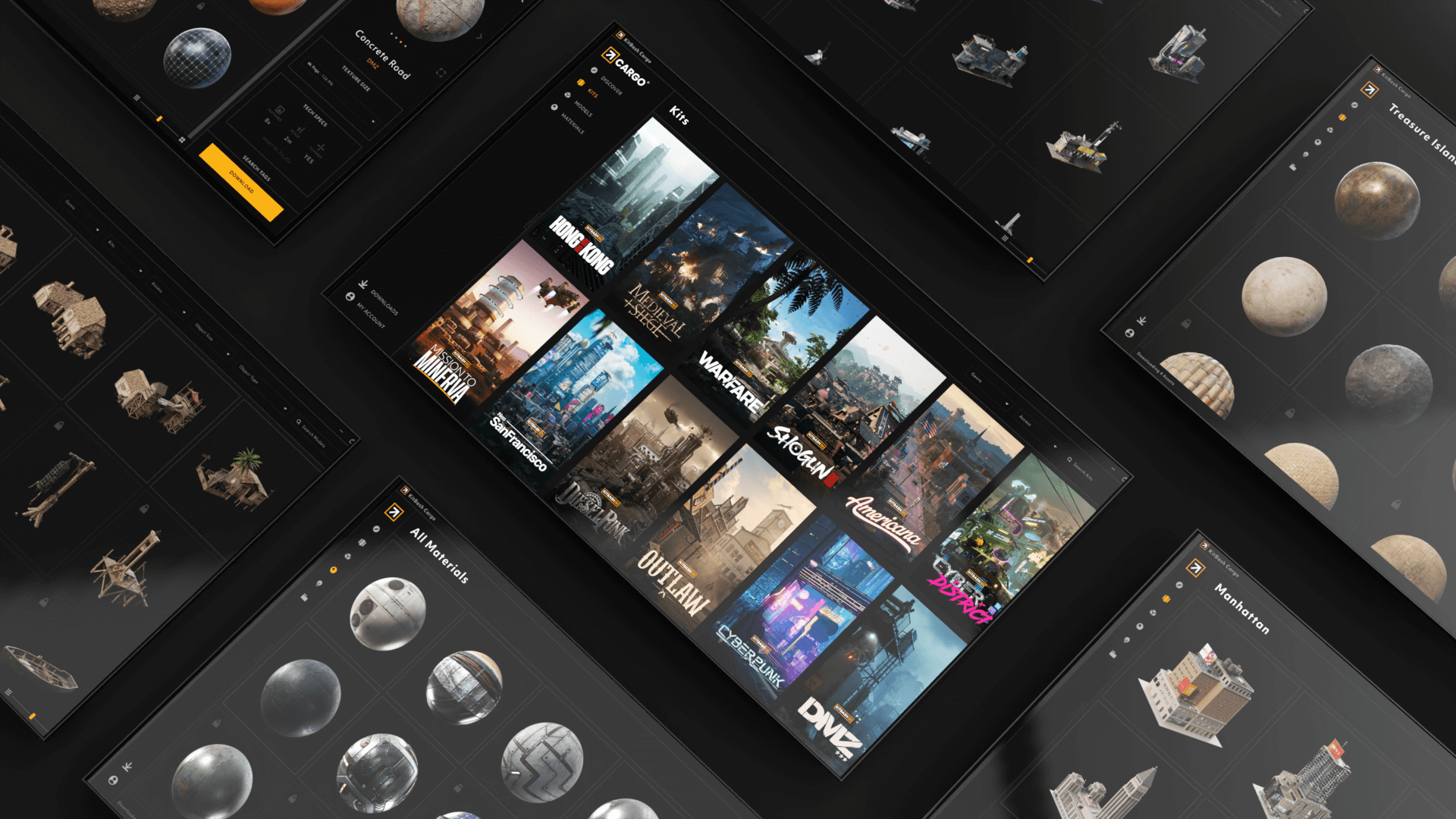Watch the latest episode of Inside KitBash3D to discover the incredible journey behind Cargo, our 3D asset manager designed to empower creators and transform workflows. In this video, we take you behind the scenes to explore how we built Cargo from the ground up, constantly pushing the boundaries of what’s possible in 3D asset management.
Now, dive deeper into the story of Cargo below, where we share more about the challenges, innovations, and breakthroughs that shaped this revolutionary tool.
At KitBash3D, striving for excellence is more than just a goal—it’s one of our core values, and a standard that drives every decision we make. When we set out to build Cargo, our revolutionary 3D asset manager, we knew we had to meet not only the high expectations of our community, but also our own. The challenge was immense, and our commitment to excellence meant we were willing to build and scrap Cargo multiple times until we had something truly groundbreaking.
The need for Cargo became clear as we observed a problem facing creators and studios everywhere: access to 3D assets is crucial, but without a way to organize, find, and reuse them, even the most innovative projects stall. Studios today are spending upwards of 30-50% of their budgets creating 3D assets, only to discard them after each project. We knew there had to be a better way. Over the past four years, we’ve developed Cargo to address this issue. Cargo organizes our entire library of more than 20,000 models and materials, making each asset searchable by keyword and ready to import into any 3D software with a single click.
When a creator first opens Cargo, our goal is to give them an immediate sense of mastery over an expansive library of high-quality assets, inspiring them with the possibilities.
From the beginning, our philosophy has always been about simplification and accessibility. We wanted Cargo to be intuitive and inviting, even for those who have never worked with a large asset library before. That meant iterating constantly, building hundreds of prototypes, and testing them with creators to fine-tune every detail. We focused on reducing unnecessary steps and ensuring that every part of the user experience is easy to understand and navigate. For instance, Cargo integrates seamlessly with any 3D software, automatically configuring assets so that they’re ready to use in one click.
One of the most significant hurdles we encountered was the lack of a universal format for 3D assets. Each 3D software uses its own file format, which complicates workflows and limits the reusability of assets across projects. When we met with Pixar in 2018, we discovered the power of USD (Universal Scene Descriptor), a game-changing technology that allows creators to work with assets in a non-destructive way. USD enables us to develop an advanced pipeline in Cargo, ensuring it works seamlessly with any 3D software, allowing for easy sharing and reuse of assets across projects.
Behind Cargo lies a powerful suite of tools that automate essential tasks like cataloging, rendering preview images, and tagging assets. Our vision for Cargo is to serve as a key piece of infrastructure that allows creators to work faster and smarter, empowering them to lead the next era of digital creativity. As we continue to push the boundaries of what’s possible, Cargo is here to help creators and studios unleash their full potential and build the future of the 3D world.
If you haven't already, make sure to download Cargo to get started on your worldbuilding journey today.
More from "Inside KitBash3D"
Explore more episodes of "Inside KitBash3D" on our YouTube channel. Each episode takes you behind the scenes, showcasing the people, processes, and innovations that make KitBash3D a leader in the 3D space. Whether you're curious about our company culture or eager to learn more about the tools we’re developing, these videos offer a deeper look at the passion and creativity driving everything we do. Check them out, and join us as we continue to inspire the creators of the virtual frontier.




